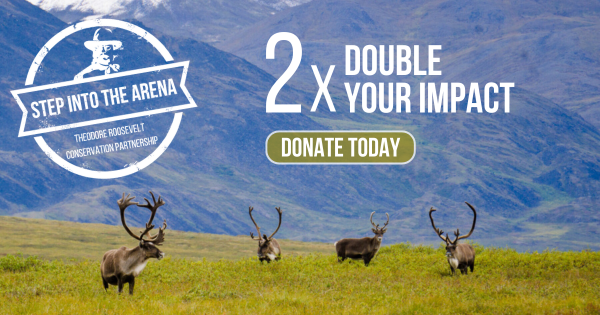The crowd was awash with blaze orange—on hats, t-shirts, and even one necktie—at the grand opening of Pheasants Forever’s new regional headquarters in Brookings, S.D., earlier this year. Perhaps the neon hue was a bright indicator of just how eager folks are to stand united for conservation.

This cross-section of the community, made up of hunters, state and federal wildlife officials, conservation leaders, and more, is exactly who needs to be at the table to help Pheasants Forever preserve and enhance habitat in South Dakota. “We live in a different world today, and there are new challenges to conservation on private lands that we can’t solve the way we have before,” Pheasants Forever president and CEO Howard Vincent said at the event. “We have to think differently. We have to bring in new resources and partners. And we’re going to have to bring together the entire state of South Dakota—agriculture, transportation, tourism, and hunting interests as well as private landowners and state and federal agencies—for one reason: to deliver more conservation.”
Habitat loss brought Pheasants Forever to South Dakota, where nearly 2 million acres of grassland habitat have been lost since 2006, and collaborating with partners across the state is how the organization plans to reverse that trend. “We know we can’t do it alone,” says the group’s vice-president of governmental affairs, Dave Nomsen. “Partnerships are how conservation happens today. A group of stakeholders comes together to pool resources and knowledge in order to meet a common goal of keeping habitat on the ground.”

The time is right, Nomsen says, to bring new support to the issue by championing the role that habitat plays in maintaining a healthy landscape and benefits to the general public.
“The value of this work extends beyond heavy game bags,” Nomsen says. “And as an increasing amount of pressure is put on the land to produce food, fuel, and fiber, it is vitally important to that we communicate how the conservation programs that we work to implement—those that provide stream buffers, protect wetlands, and maintain large blocks of grasslands to benefit pheasants, quail, ducks, and other wildlife species—also help protect water resources, maintain healthy soils, and improve air quality for everyone. The key is to find a balance.”
Tom Kirschenmann, chief of terrestrial resources for South Dakota Game, Fish, and Parks, believes that South Dakota’s private landowners are conservation’s most valuable partner in reaching that balance. “We couldn’t achieve any success in conservation without the commitment and cooperation of families who live on the ground, care for the ground,” Kirschenmann says. “And part of our job is connecting these landowners with the programs that will help them provide quality habitat for pheasants and other wildlife, while still benefitting their operation’s bottom line.”

There is perhaps no better example of this than the success of the Conservation Reserve Enhancement Program (CREP) in the James River Valley of South Dakota, where 82,000-acres of marginal cropland have been enrolled and restored to grassland habitat. Kirschenmann says that nearly all CREP contracts, which vary in length from 10 to 15 years, were signed with the help of a Farm Bill biologist, a position made possible by Pheasants Forever in partnership with the Natural Resources Conservation Service and South Dakota Game, Fish, and Parks. Landowners who enroll ground in CREP receive a 40 percent higher rental rate than traditional Conservation Reserve Program contracts, and every acre enrolled in CREP is open year-round to hunting and fishing.
“The program is a win-win situation all the way around,” Kirschenmann says, “and it is all made possible by partnerships involving local landowners, state and federal agency funding, and the work of a private conservation organization.” Continuing to leverage the power of these partnerships will be crucial to finding solutions to the challenges facing conservation on private grounds in South Dakota, adds Pheasants Forever’s Nomsen. “And the key element we need to focus on together—Pheasants Forever, the state of South Dakota, landowners, and everyone else involved—is keeping quality habitat on the ground. Preserving the pheasant hunting culture of South Dakota depends on habitat.”
Author John Pollmann is a life-long bird hunter and freelance outdoor writer from South Dakota. A 2012 recipient of the John Madson Fellowship from the Outdoor Writers Association of America, Mr. Pollmann is a regular contributor to the Sioux Falls (SD) Argus Leader; provides a bi-monthly report on South Dakota for the Minnesota Outdoor News; and is the waterfowl columnist for the Aberdeen (SD) American News Outdoor Forum. Other writing credits include the pages of magazines for Ducks Unlimited, Delta Waterfowl, and American Waterfowler.
In addition to outdoor writing, Mr. Pollmann holds an advanced degree in music and currently teaches at Pipestone Area School in Pipestone, MN. He is an active member of Ducks Unlimited, Delta Waterfowl, Pheasants Forever, the Theodore Roosevelt Conservation Partnership and was named to the country’s first conservation pro-staff with Vanishing Paradise.
Mr. Pollmann lives in Dell Rapids, SD with his wife Amber, their son Miles, and a yellow Labrador named Murphy.










